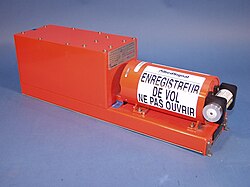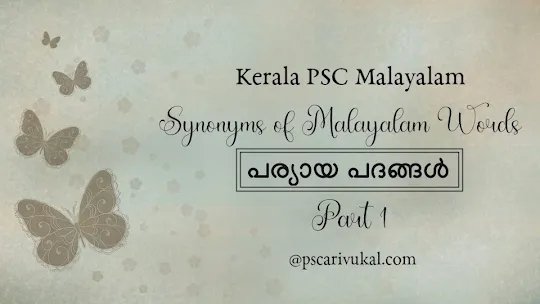On June 12, 2025, Air India Flight AI-171, a Boeing 787-8 Dreamliner, crashed tragically moments after taking off from Sardar Vallabhbhai Patel International Airport, Ahmedabad, en route to London Gatwick.
It has sent shockwaves across the nation and brought India's rapidly expanding aviation sector under intense scrutiny.
The devastating incident resulted in the loss of 242 lives on board (comprising 229 passengers and 13 crew members) as well as 38 fatalities on the ground, most of whom were students in the dining area of B.J. Medical College hostel, where the aircraft primarily impacted.
There were 169 Indians, 53 British nationals, 7 Portuguese, and 1 Canadian on the flight.
Vijay Rupani, who formerly served as the Chief Minister of Gujarat, was among those who lost their lives. He held the position of Chief Minister in Gujarat from August 2016 until September 2021.
This incident marks the second-deadliest aviation disaster in India since the 1996 Charkhi Dadri mid-air collision and Air India’s worst tragedy since the bombing of Flight 182 in 1985.
Flight Details and Crash Sequence
Reports also indicate that the pilots issued a 'mayday' call citing loss of thrust shortly after departure, before losing radio contact.
What is a Mayday Call?
A Mayday call is an urgent, internationally recognized distress signal used in aviation and maritime emergencies. It signifies an immediate, life-threatening situation demanding urgent assistance.
Origin and Usage
The term 'Mayday' originates from the French phrase 'm'aider,' meaning 'help me.' This signal is declared when an aircraft (or vessel) faces imminent and grave danger, such as:
- Engine failure
- Fire on board
- Loss of control
- Structural failure
How a Mayday Call is Made
When declaring a Mayday, pilots follow a specific protocol to ensure clarity and urgency:
They repeat 'Mayday' three times ("Mayday, Mayday, Mayday"). This repetition helps distinguish it from other transmissions and confirms the gravity of the situation.
Immediately following, they provide crucial details:
- Aircraft call sign
- Nature of the emergency (e.g., 'engine fire,' 'loss of hydraulics')
- Current position, altitude, and their intentions (e.g., 'attempting emergency landing at nearest airport').
The severity of the crash, compounded by a massive post-impact fire (reaching temperatures of up to 1,500°C), has made the identification of victims a challenging and sensitive process, with DNA matching still underway for several families.
The Lone Survivor
Aftermath & Investigation Process
The Aircraft Accident Investigation Bureau (AAIB) of India has launched a full-scale investigation into the crash, adhering to international protocols set by the International Civil Aviation Organization (ICAO).
Aircraft Accident Investigation Bureau (AAIB)
- Established in: 2012 under the Ministry of Civil Aviation.
- Mandate: Investigates civil aircraft accidents and serious incidents to determine causes and recommend safety measures (as per Annex 13 of ICAO).
- Legal Backing: Aircraft (Investigation of Accidents and Incidents) Rules, 2017.
Given the Boeing aircraft and the presence of British citizens among the victims, the US National Transportation Safety Board (NTSB), the Federal Aviation Administration (FAA), and the UK's Air Accidents Investigation Branch (AAIB-UK) are actively assisting in the probe.
Investigators are following the UN-prescribed Manual of Accident Investigation (DOC 9756). The process is expected to be lengthy due to the severity of the crash and damage to the evidence.
International Civil Aviation Organization (ICAO)
- Established on: 1944
- Headquarters: Montreal, Canada.
- Membership: 193 member countries, including India.
- Signed on: Signed on 7th December 1944 in Chicago.
- Chicago Convention: The Chicago Convention is a treaty that regulates international civil aviation and created the ICAO, a UN agency.
- Purpose: a specialised UN agency that established standards and procedures to promote safe and orderly international air transport growth.
- The Air Navigation Commission (ANC) is the technical body within the ICAO. The commission is composed of 19 commissioners, nominated by the ICAO’s contracting states and appointed by the ICAO Council.
A crucial aspect of the investigation is the analysis of the recovered 'black boxes.'
Black Boxes
'Black boxes' are a misnomer for the crucial flight recorders found on every commercial aircraft.
These highly durable devices are, in fact, bright orange colored and provide investigators with a detailed chronological record of a flight's parameters and the cockpit environment leading up to an incident.
By analyzing the data and audio contained within, experts can piece together the sequence of events and determine the cause of a crash.
They consist of two main components:
- Flight Data Recorder (FDR): records a vast array of technical data points such as altitude, speed, heading, engine performance, autopilot status, and settings, etc, providing a precise timeline of the aircraft's performance.
- Cockpit Voice Recorder (CVR): This device records all audio within the cockpit, offering critical insights into pilot actions, decision-making, and the nature of an emergency.
While one of the black boxes sustained damage, efforts are underway to retrieve and interpret the binary data, which holds vital clues about cockpit conversations, engine parameters, and control settings in the moments leading up to the crash.
Experts anticipate that the investigation will be a long and complex process due to the extensive damage to the aircraft.
The Indian government has also established a high-level committee to examine the causes and formulate procedures to prevent and handle future aircraft emergencies, with a preliminary report expected within three months.
Early speculation suggests a dual-engine failure as the engines shut down completely, evidenced by the deployment of the ram air turbine (RAT).
Both GE Aerospace engines, last overhauled in 2025 and 2023, respectively, are under intense scrutiny.
Implications for India's Aviation Sector
Directorate General of Civil Aviation (DGCA)
- Headquarters: New Delhi
Responsibilities
The DGCA's comprehensive mandate includes:
- Regulating air transport services: This involves issuing licenses, setting operational standards, and overseeing the functioning of airlines and other aviation service providers.
- Enforcing air safety and airworthiness standards: ensures that aircraft are safe to fly and that all aviation operations adhere to strict safety protocols through inspections, audits, and certifications.
- Coordinating with the International Civil Aviation Organization (ICAO): The DGCA plays a crucial role in representing India at ICAO, ensuring that national aviation regulations align with international standards and practices for global air safety.
While initial checks have not revealed 'major safety concerns,' the incident highlights the need for continuous and stringent safety audits.
Concerns have also been raised about previous warnings from the DGCA regarding Air India's operations and potential regulatory shortfalls within the DGCA itself, including staffing and funding issues.
Air India
Air India, currently undergoing a significant transformation under Tata Group ownership, this crash presents a considerable challenge to its efforts to rebuild its image and expand its operations.
The airline has expressed its commitment to supporting affected families and ensuring full cooperation with the investigation.
Boeing
The incident also casts a renewed spotlight on Boeing, particularly its 787 Dreamliner, which has faced scrutiny over safety issues in the past (multiple former Boeing employees turned whistleblowers raising the concerns for its safety), though this is reported to be the first fatal crash involving the 787 in its 16 years of operation.
Boeing’s stock dropped approximately 7% after the crash and is down ~7% since the tragedy. GE Aerospace also experienced a mild decline.
Insurance & Compensation
The crash is expected to be one of India's costliest aviation claims (a ₹39.4 billion insurance claim), with significant payouts anticipated for the aircraft's hull, engines, and passenger liability. This could lead to a rise in insurance premiums for Indian carriers, potentially impacting ticket prices.
Since it is an international flight, the Passenger compensation comes under what is called the 'passenger legal liability insurance,' a mandatory part of aviation coverage, and is governed by the Montreal Convention, which India is a signatory to.
Montreal Convention of 1999 (MC99)
The Montreal Convention of 1999 is a key international treaty governing airline liability for international flights.
- Purpose: Modernizes and unifies rules for airline liability for passenger death/injury, baggage, and delays.
- Key Feature: Two-Tier Liability for Passenger Death/Injury:
- Strict Liability (Tier 1): Airlines are liable up to ~128,821 Special Drawing Rights (SDRs) per passenger, regardless of fault. (SDRs are an international reserve asset, not a currency, used by the IMF).
- Presumed Liability (Tier 2): For claims above the SDR limit, the airline can avoid liability only by proving it was not negligent or that a third party was solely responsible. If airline negligence is proven, there are generally no upper limits on compensation.
- Prompt Compensation: Encourages quick, fair payouts and often mandates advance payments.
- Mandatory Insurance: Requires airlines to have sufficient liability insurance.
The Tata Group, owners of Air India, has announced an Rs 1 crore compensation for the victims of the recent crash. This payment is categorized as an ex gratia payment.
An ex gratia payment is a voluntary payout made as a gesture of goodwill or compassion, without any legal or contractual obligation to do so.
Experts emphasize that this Rs 1 crore ex-gratia payment is entirely separate from, and does not replace, the compensation legally owed to passengers under their legal liability insurance, as mandated by the Montreal Convention.
Conclusion
The crash of AI-171 is a moment of reckoning for Indian aviation, the world’s 3rd-largest domestic aviation market.
As authorities work to uncover the truth behind the disaster, the focus must shift to accountability, regulatory reform, and systemic safety improvements.
The resilience of the families, the integrity of the investigation, and the transparency of regulators and airlines will determine how India recovers from this tragedy and how future accidents can be prevented.
Thanks for reading!!!










Post a Comment
Post a Comment